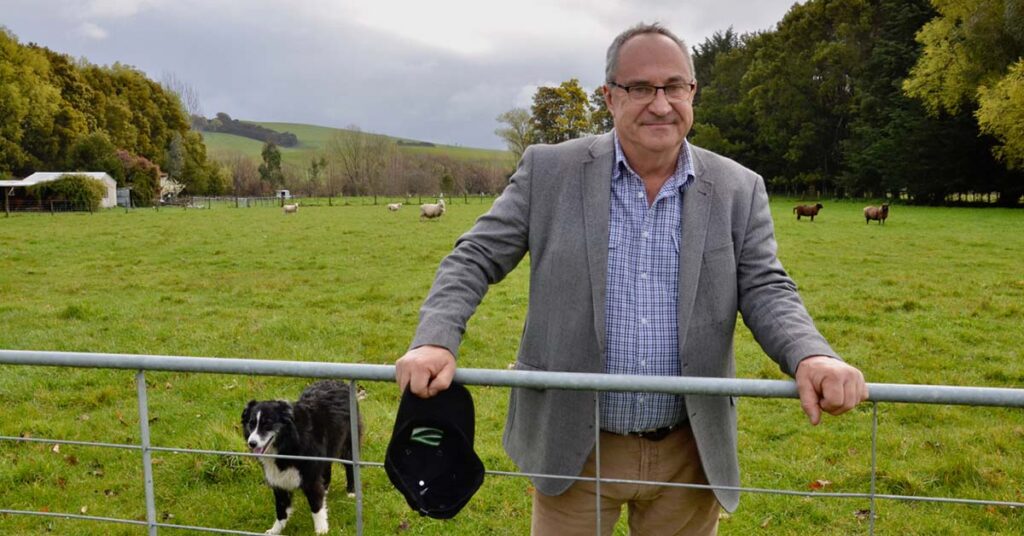Signals from the new Government have given Wairarapa residents hope that a stalled community water storage scheme – or some version of it – could soon be revived.
After 20 years’ debate and planning, and $12 million spent, the Wakamoekau community dam project was canned in 2021.
Now, there’s a sense of optimism among farmers and the wider community that the water storage scheme might be back on the table, Federated Farmers Wairarapa president David Hayes says.
“Water storage is critical to the future of our towns and rural hinterland, to employment, production and the health of our rivers and wider environment.
“A recent meeting with Minister for Rural Communities Mark Patterson, and other signals from the new Government, are giving us hope that the Wakamoekau scheme and other water storage projects around the country might get traction.”
In February, Patterson met with Wairarapa’s three mayors, Federated Farmers, the Rural Support Trust, Wairarapa MP Mike Butterick and others to discuss how Wairarapa is recovering from Cyclone Gabrielle.
The meeting was a chance to raise the issue of water storage too, Hayes says.
“Talking about the recovery issues related to Gabrielle is really important, but long-term resilience is what really matters.
“We want Cabinet to look at their commitments for resource management reform and improved water storage, and consider the Wairarapa as a prime candidate for ‘first cab off the rank’.”
The Wakamoekau scheme, northwest of Masterton, was designed to harvest high winter flows of the Waingawa River into a 20-million-cubic-metre dam for use in summer.
It was seen as a foundation block of the region’s resilience strategy and received millions from the Provincial Growth Fund, regional council and private companies.
When abandoned in 2021, its backers cited the time and costs of trying to navigate planning restrictions.

Hayes says, while Patterson made no commitments at the February meeting, he spoke about the opportunities available to rural communities for water storage, irrigation and flood protection through the $1.2 billion Regional Infrastructure Fund.
“The new Government has also made commitments on resource management reform, fast-tracking of vital projects and recognition that water storage can unleash economic development,” Hayes says.
“Hopefully we’ll start to see concrete moves on that front.”
Based on work done by MPI’s Water and Availability Group, the ‘briefing to incoming ministers’ from Irrigation New Zealand urged the new Government to re-establish feasibility work for water storage projects in “high-need areas, focused on producing food”, including the Wairarapa, East Coast, Hawke’s Bay and Otago.
“There are many projects that with tweaks and support could begin immediately under a fast-track approach,” the briefing says.
Irrigation NZ’s briefing notes that when MPI launched its 10-year strategy in 2020, water storage was first in line as a “transformational opportunity … to give farmers access to higher value land use options, product supply chains, and higher employment”.
Unfortunately, with multiple agencies working on freshwater issues there’s a lack of co-ordination and direction.
“This often leads regional councils to interpret and implement rules that are not practical or have unintended negative consequences,” the briefing states.
There are positive signs progress will be made on water storage, with National’s Primary Sector Growth Plan calling for water storage on farmland to be a permitted activity, within limits; a requirement for councils to approve or decline consents for other types of water storage within two years of an application; to provide consents for water storage for at least 30 years to give certainty; and where appropriate to match water storage with renewable energy generation.
Irrigation NZ’s briefing, which highlights the Wairarapa scheme as a case study, suggests the Government could reinstate an investigations fund, much like the Irrigation Acceleration Fund, provide low-interest financing via government borrowing channels, and “ensure environmental and economic factors are given equal weight in consent deliberations”.
Meanwhile, Federated Farmers believes new dam safety regulations go too far and will prove a significant block to on-farm water storage unless amended.
The Building (Dam Safety) Regulations 2022 are due to come into effect in May. It’s estimated they’ll cover around 3000 dams throughout the country, which will need to be assessed by recognised engineers and reviewed every five years.
Mark Hooper, Federated Farmers spokesperson for buildings and farm structures, says these and other costs, such as developing a Dam Safety Assurance Programme, are in many cases out of kilter with the potential risk posed by smaller dams to people and property.
The changes Federated Farmers sought around dam sizes captured by the regulations would drop the number needing management to about 800.
According to Irrigation NZ, there are currently only 13 recognised dam engineers in New Zealand, so farmers with dams in more remote areas will struggle to get an engineer out to do assessments, Hooper says.
Federated Farmers, New Zealand’s leading independent rural advocacy organisation, has established a news and insights partnership with AgriHQ, the country’s leading rural publisher, to give the farmers of New Zealand a more informed, united and stronger voice. Feds news and commentary appears each week in its own section of the Farmers Weekly print edition and online.










